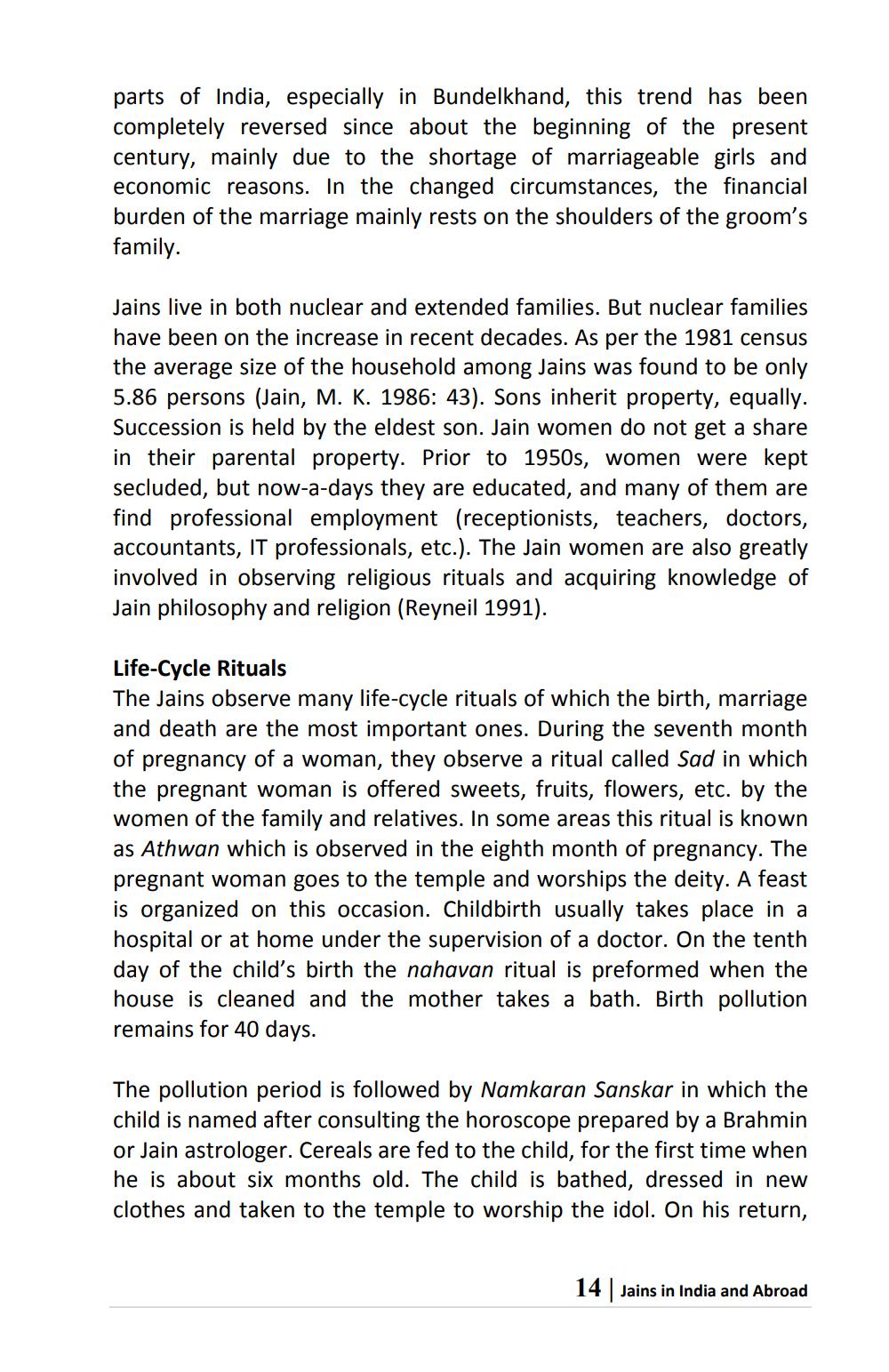________________
parts of India, especially in Bundelkhand, this trend has been completely reversed since about the beginning of the present century, mainly due to the shortage of marriageable girls and economic reasons. In the changed circumstances, the financial burden of the marriage mainly rests on the shoulders of the groom's family.
Jains live in both nuclear and extended families. But nuclear families have been on the increase in recent decades. As per the 1981 census the average size of the household among Jains was found to be only 5.86 persons (Jain, M. K. 1986: 43). Sons inherit property, equally. Succession is held by the eldest son. Jain women do not get a share in their parental property. Prior to 1950s, women were kept secluded, but now-a-days they are educated, and many of them are find professional employment (receptionists, teachers, doctors, accountants, IT professionals, etc.). The Jain women are also greatly involved in observing religious rituals and acquiring knowledge of Jain philosophy and religion (Reyneil 1991).
Life-Cycle Rituals
The Jains observe many life-cycle rituals of which the birth, marriage and death are the most important ones. During the seventh month of pregnancy of a woman, they observe a ritual called Sad in which the pregnant woman is offered sweets, fruits, flowers, etc. by the women of the family and relatives. In some areas this ritual is known as Athwan which is observed in the eighth month of pregnancy. The pregnant woman goes to the temple and worships the deity. A feast is organized on this occasion. Childbirth usually takes place in a hospital or at home under the supervision of a doctor. On the tenth day of the child's birth the nahavan ritual is preformed when the house is cleaned and the mother takes a bath. Birth pollution remains for 40 days.
The pollution period is followed by Namkaran Sanskar in which the child is named after consulting the horoscope prepared by a Brahmin or Jain astrologer. Cereals are fed to the child, for the first time when he is about six months old. The child is bathed, dressed in new clothes and taken to the temple to worship the idol. On his return,
14 Jains in India and Abroad




